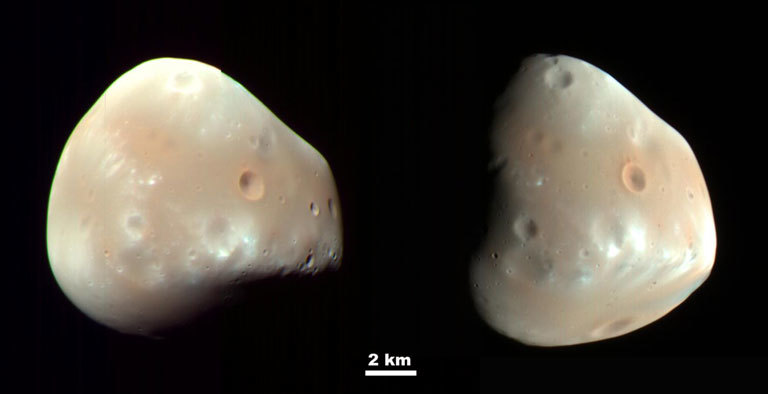Mars- Our Future home
Mars is the fourth terrestrial planet planet from the Sun – a dusty, cold, desert world
with a very thin atmosphere. Mars is also a dynamic planet with seasons,
polar ice caps, canyons, extinct volcanoes, and evidence that it was
even more active in the past. Mars is one of the most explored bodies in our solar system, and it's
the only planet where we've sent rovers to roam the alien landscape.NASA currently has two rovers (
Curiosity and
Perseverance), one lander (
InSight), and one helicopter (
Ingenuity) exploring the surface of Mars. In May 2021, China became the
second nation to ever land successfully on Mars when its Zhurong Mars rover touched down.
Exploration
No planet beyond Earth has been studied as intensely as Mars. Recorded
observations of Mars date as far back as the era of ancient Egypt over
4,000 years ago, when they charted the planet's movements in the sky.
Today, NASA has a fleet of robotic spacecraft studying Mars from all
angles.
Size And Distance
With a radius of 2,106 miles (3,390 kilometers), Mars is about half the
size of Earth. If Earth were the size of a nickel, Mars would be about
as big as a raspberry.From an average distance of 142 million miles (228 million kilometers), Mars is 1.5 astronomical units away from the Sun.
Orbit and Rotation
As Mars orbits the Sun, it completes one rotation every 24.6 hours,
which is very similar to one day on Earth (23.9 hours). Martian days are
called sols – short for "solar day." A year on Mars lasts 669.6 sols,
which is the same as 687 Earth days.
Mars' axis of rotation is tilted 25 degrees with respect to the plane of
its orbit around the Sun. This is another similarity with Earth, which
has an axial tilt of 23.4 degrees. Like Earth, Mars has distinct
seasons, but they last longer than seasons here on Earth since Mars
takes longer to orbit the Sun
Potential for Life
Scientists don't expect to find living things currently thriving on
Mars. Instead, they're looking for signs of life that existed long ago,
when Mars was warmer and covered with water.
Moons
Mars has two small moons,
Phobos and
Deimos, that may be captured asteroids. They're potato-shaped because they have too little mass for gravity to make them spherical.
Phobos, the innermost and larger moon, is heavily cratered, with deep
grooves on its surface. It is slowly moving towards Mars and will crash
into the planet or break apart in about 50 million years
Deimos is about half as big as Phobos and orbits two and a half times
farther away from Mars. Oddly-shaped Deimos is covered in loose dirt
that often fills the craters on its surface, making it appear smoother
than pockmarked Phobos.

Formation
When the solar system settled into its current layout about 4.5 billion
years ago, Mars formed when gravity pulled swirling gas and dust in to
become the fourth planet from the Sun. Mars is about half the size of
Earth, and like its fellow terrestrial planets, it has a central core, a
rocky mantle, and a solid crust
Structure
Mars has a dense core at its center between 930 and 1,300 miles (1,500
to 2,100 kilometers) in radius. It's made of iron, nickel, and sulfur.
Surrounding the core is a rocky mantle between 770 and 1,170 miles
(1,240 to 1,880 kilometers) thick, and above that, a crust made of iron,
magnesium, aluminum, calcium, and potassium. This crust is between 6
and 30 miles (10 to 50 kilometers) deep.
Surface
The Red Planet is actually many colors. At the surface, we see colors
such as brown, gold, and tan. The reason Mars looks reddish is due to
oxidization – or rusting – of iron in the rocks, regolith (Martian
“soil”), and dust of Mars. This dust gets kicked up into the atmosphere and from a distance makes the planet appear mostly red.
Mars is home to the largest volcano in the solar system, Olympus
Mons. It's three times taller than Earth's Mt. Everest with a base the
size of the state of New Mexico.
Mars appears to have had a watery past, with ancient river valley
networks, deltas, and lakebeds, as well as rocks and minerals on the
surface that could only have formed in liquid water. Some features
suggest that Mars experienced huge floods about 3.5 billion years ago.
Atmosphere
Mars has a thin atmosphere made up mostly of carbon dioxide, nitrogen,
and argon gases. To our eyes, the sky would be hazy and red because of
suspended dust instead of the familiar blue tint we see on Earth. Mars'
sparse atmosphere doesn't offer much protection from impacts by such
objects as meteorites, asteroids, and comets.
The temperature on Mars can be as high as 70 degrees Fahrenheit (20
degrees Celsius) or as low as about -225 degrees Fahrenheit (-153
degrees Celsius). And because the atmosphere is so thin, heat from the
Sun easily escapes this planet. If you were to stand on the surface of
Mars on the equator at noon, it would feel like spring at your feet (75
degrees Fahrenheit or 24 degrees Celsius) and winter at your head (32
degrees Fahrenheit or 0 degrees Celsius).



good blogs
ReplyDelete